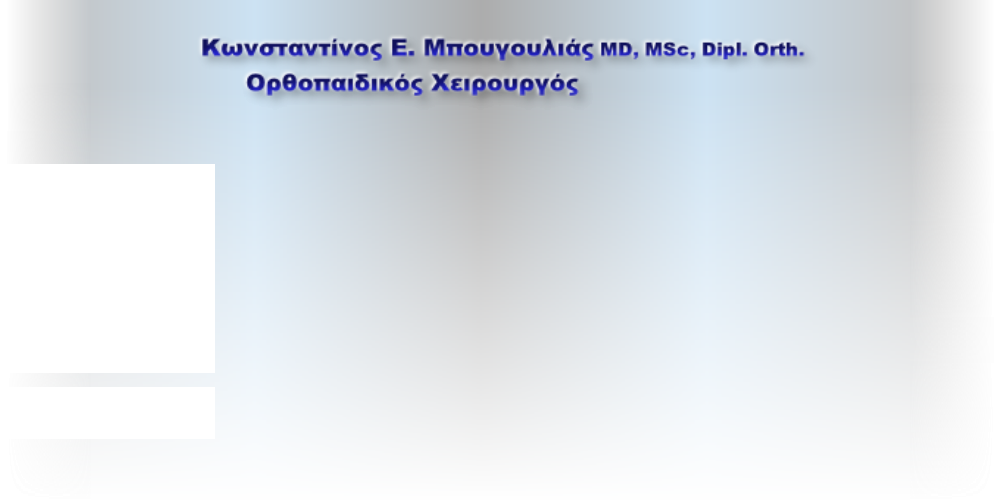


Κωνσταντίνος
Ορθοπαιδικός
Bougoulias.com | © 2022 | All rights reserved
Μπουγουλιάς
Χειρουργός
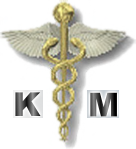




The latest HTML5, CSS3 and advanced JavaScript have
been used to ensure the highest compatibility.




ΜΕΤΑΠΤΥΧΙΑΚΗ ΔΙΑΤΡΙΒΗ ΓΙΑ ΤΟ UNIVERSITY COLLEGE LONDON (UCL) ΔΗΜΟΣΙΕΥΘΕΙΣΑ ΣΤΟ "JOURNAL OF BIOMECHANIC"


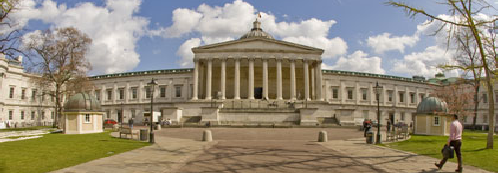
Muscle fascicle and series elastic element length changes along the
length of the human gastrocnemius during walking and running.


Poster:
Aim of the study:
It was to find out if the muscle fibers of gastrocnemius medialis behave the same in terms of length changes, in different parts of the muscle belly during real life movements and specifically during walking and running.
Materials and methods:
Six healthy subjects, three male and three female volunteered to participate in the study. Average (mean, +/-
Muscle fibre length and orientation were made at 0, 20, 40, 60, 80 and 100% of both stance and swing phase. The length of the fascicles was measured as length of the echo that runs diagonally from superficial to deep aponeurosis along the fascicle.

Results:
Statistical analysis with repeated measures analysis of variance was performed with univanate test of significance (significance accepted at P< 0.05).There was significant difference in the way that the fibres change length at different levels of human gastrocnemius mediallis in walking in vivo. This did not happen in running situation. There were different patterns in length changes in walking and running, with almost isometric contraction during stance phase in walking and continuous shortening during all stance and up to middle of swing phase in running.
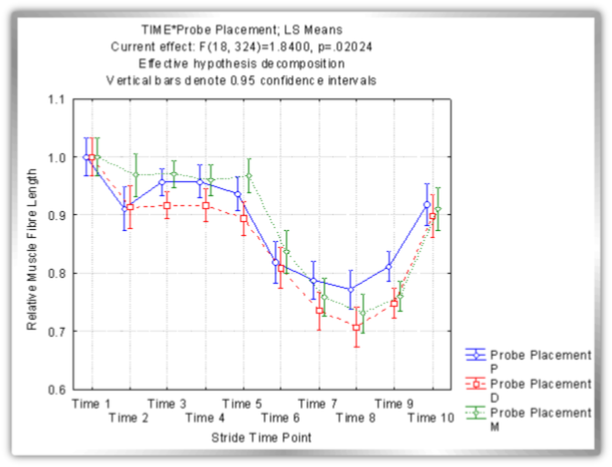

Length changes against stride time point for three (3) probe positions (proximal, middle, distal) during walking. Relative muscle fibre length 1.0 means 100% of fibre length (maximum) at heel on position. Shortening up to 0.9 means 10% shortening. On the X axis, time 2 represents 20% of stance phase, time 3 the 40%, time 4 the 60%, time 5 the 80%, time 6 the 100% of stance phase and toe off. Respectively, time 7 represents the 20% of swing phase, and so on and so fourth until time 10 for the 80% of swing phase in order to come at last back to time 1 representing 100% of swing phase and the new heel on position.
This convention is held for the rest of the diagrams.
Comparing between the subjects themselves (diagr.2), we can see that the fascicles follow similar type of changes, with mild shortening at the beginning of stance phase, relatively stable length for the rest of stance phase, shortening again up to the middle of swing phase and lengthening up to the beginning of the next walking cycle.
In this diagram, muscle fiber changes for the plot of all three probe positions against stride time are represented with different colours for each subject.


Diagram 3 describes the same situation as diagram 1, length changes at different levels for the plot of all subjects, but, during running. We can see the obvious difference to the pattern of the fascicle length changes comparing to the one during walking. There is shortening of the fascicles continuously all the way up to the middle of the swing phase, time point eight, and then, they start lengthening again up to time point ten which represents the next heel on position and the begin of the next running cycle. During most of the stance phase in walking, the length of the fascicles remains approximately the same; but during running, that does not happen and the length continues decreasing. The maximum shortening takes place at the same time as in walking ( middle of swing phase) but the amount of shortening is bigger about 10% than walking.
Using the same statistical test, repeated measures analysis of variance, no significant difference (P=0.0557, > 0.05) was found between probe placements in running (diagr.3).
Respectively, in diagram 3 about running, we used univanate test of significance for each time point, comparing length changes during running cycle stride points, for each probe position. We found significant difference at time point 4, P value : 0.047 (<0.05).




Conclusion: Walking is more energy effective than running, because of energy saving procedures and elastic energy storage and recoil by the tendinious structures during locomotion. Distal part of gastrocnemius mediallis is probably more vulnerable to injuries because of bigger length changes. All informations gave us a better idea and extended our knowledge of how human body acts.

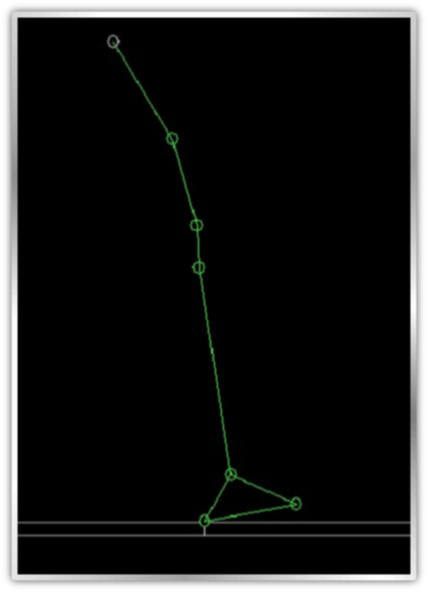

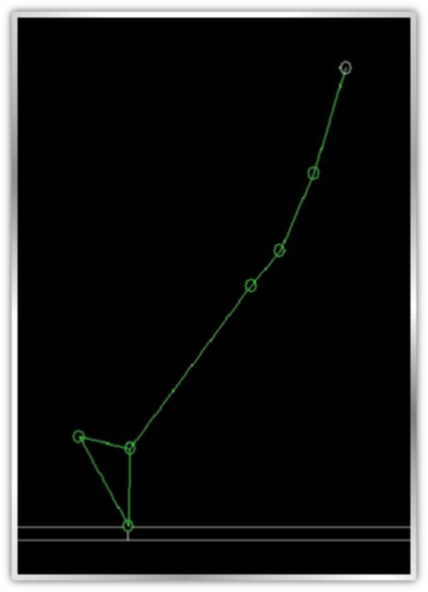

(Toe off position)
(Heel on position)
Length changes against stride time point for each subject (n=6) during walking.
Length changes against stride time point for three (3) probe positions (proximal, middle, distal) during running.
Length changes against stride time point for each subject (n=6) during running.
UCL -






In running also (diagr.4), we see similar changes between the subjects with continuous shortening until the middle of the swing phase and then increase of the length until the end of the cycle; so, similar type of changes as in walking (diagr. 2) but the magnitude of these changes is different for each subject.
